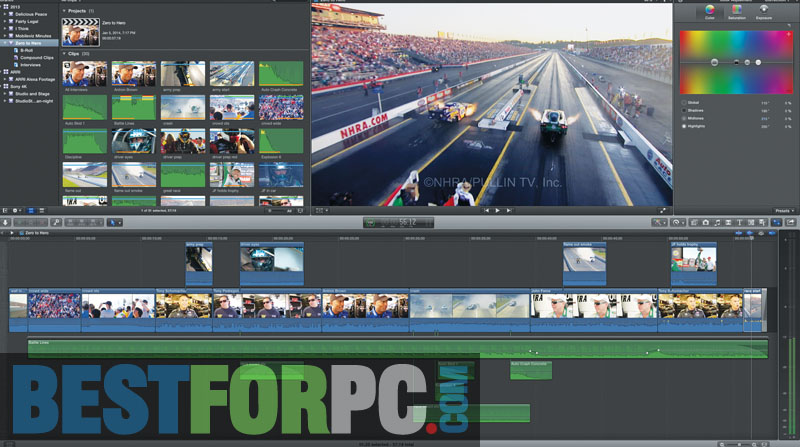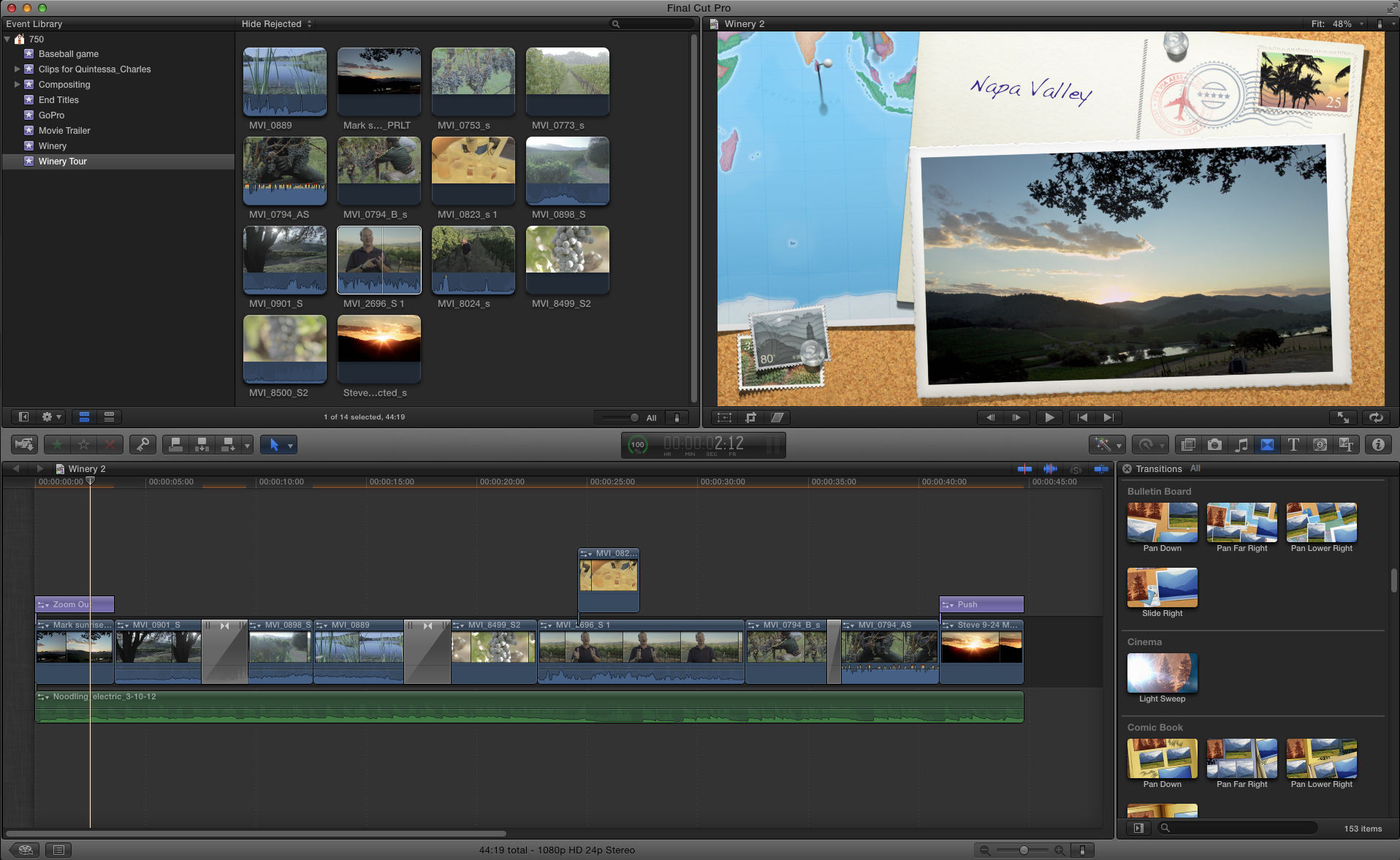
- FINAL CUT PRO MAC EMULATOR WINDOWS MOVIE
- FINAL CUT PRO MAC EMULATOR WINDOWS ANDROID
- FINAL CUT PRO MAC EMULATOR WINDOWS PRO
FINAL CUT PRO MAC EMULATOR WINDOWS MOVIE
Throw the same workload on the M1 MacBook Air with 8GB of RAM, and the Air doesn’t even flinch! I then have to bump up the number of open tabs in Chrome to the point where it’s borderline ridiculous to have that many tabs open….and throw in a 4K movie playback in VLC to finally start seeing things slow down.
FINAL CUT PRO MAC EMULATOR WINDOWS PRO
On the 16-inch MacBook Pro with 16GB of RAM, I frequently run out of RAM with about 20-30 tabs in Chrome, Final Cut Pro, Lightroom, Twitter, Excel, Word, Slack and a couple of utility apps open at the same time. The MacBook Air M1 multitasks like a champ Apps optimized for the M1 chip, which includes all of Apple’s native macOS apps and an increasing list of everyday apps such as Chrome and Microsoft Office, simply don’t need as much RAM to run as they did back on the Intel Macs, and the unified memory integrated onto the M1 chip just goes further with these apps.
FINAL CUT PRO MAC EMULATOR WINDOWS ANDROID
It’s a bit like the situation with iOS devices running with less RAM than Android devices and the du jour 12GB of memory they pack. My initial skepticism of using an 8GB RAM machine wore out rather quickly as I saw, firsthand, that 8GB of the M1’s unified memory isn’t the same as the 8GB RAM on an Intel-powered Air.


1,22,900) and the higher-spec Air with one extra graphics core and twice the storage (Rs. 92,900) compared to the pricier Pros (Rs. I’ve had the entry-level MacBook Air with 8GB of RAM and 256GB of storage in for review – this is a model that will be the crowd-puller with its comparatively lower price of entry (Rs. In a nutshell, hell yeah! All the hype you’ve heard about the performance and battery life boost over the previous generation MacBook Air is real. Owning the entire hardware-software stack is an approach that’s served Apple well on iPads and iPhones, but does it reap the same rewards on the Mac?

With the M1 chip, Apple now owns the whole process, from the chip design to what components and capabilities go onto the chip. Meanwhile, Apple had been honing its chip chops on the ARM-based A-series mobile chips, and earlier this year, Apple announced a two-year transition away from Intel to Apple Silicon at WWDC 2020.

Over time, the overreliance on Intel cramped Apple’s release schedules and how much they could tweak the chip to macOS’ benefit. Apple’s Mac lineup has, since the past 14 years when it famously made the transition away from PowerPC, run on Intel chips. The MacBook Air, by far Apple’s most popular Mac, is among the first to get the bump up to the all-new Apple M1 chipset, and while it may look like it was separated at birth from the 2020 Intel-based MacBook Air that launched barely six months ago, the M1 Air represents one of the biggest upgrades for the Air series…ever.īefore I explain further, a quick history lesson on Apple Silicon and the new M1 chip is in order. After years of speculation and months of hype, the first laptops and desktops powered by Apple Silicon that we saw launched at the ‘ One More Thing’ Apple event in November are here.


 0 kommentar(er)
0 kommentar(er)
